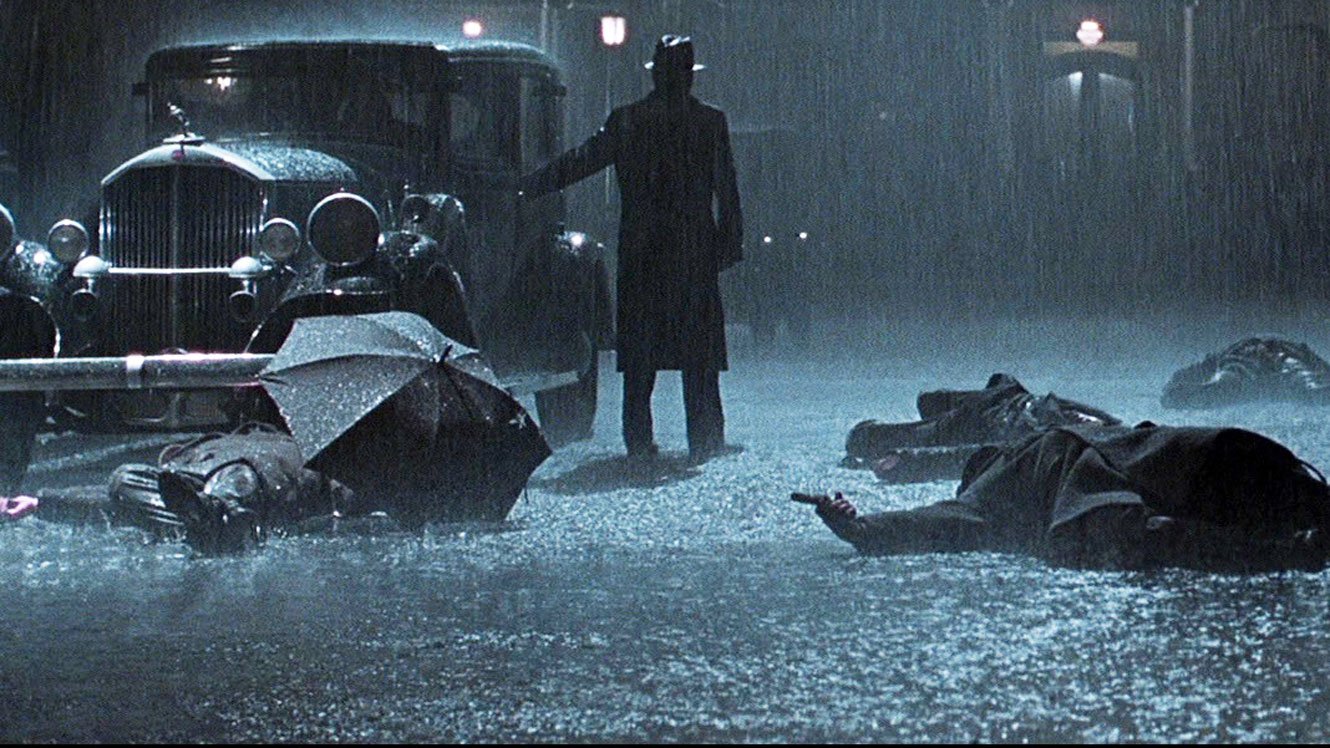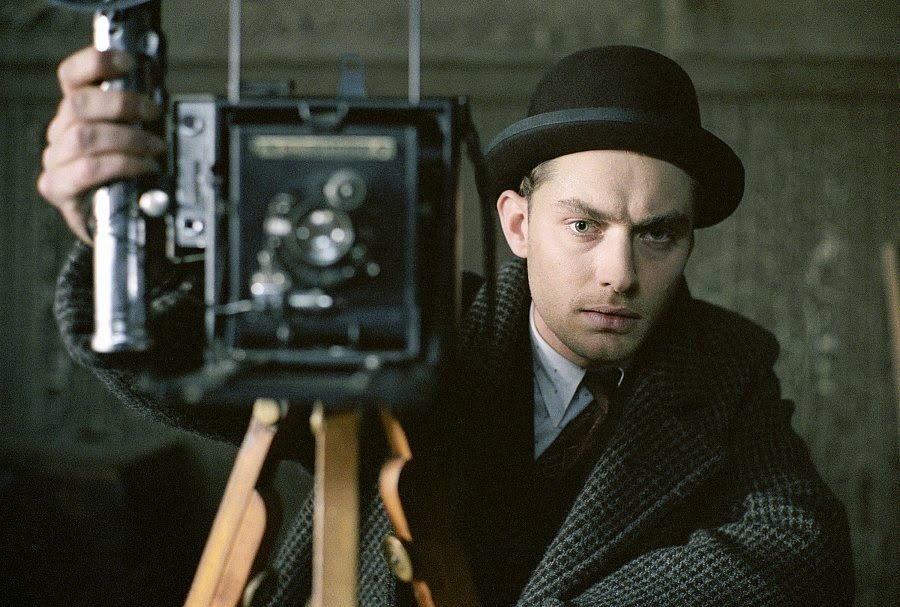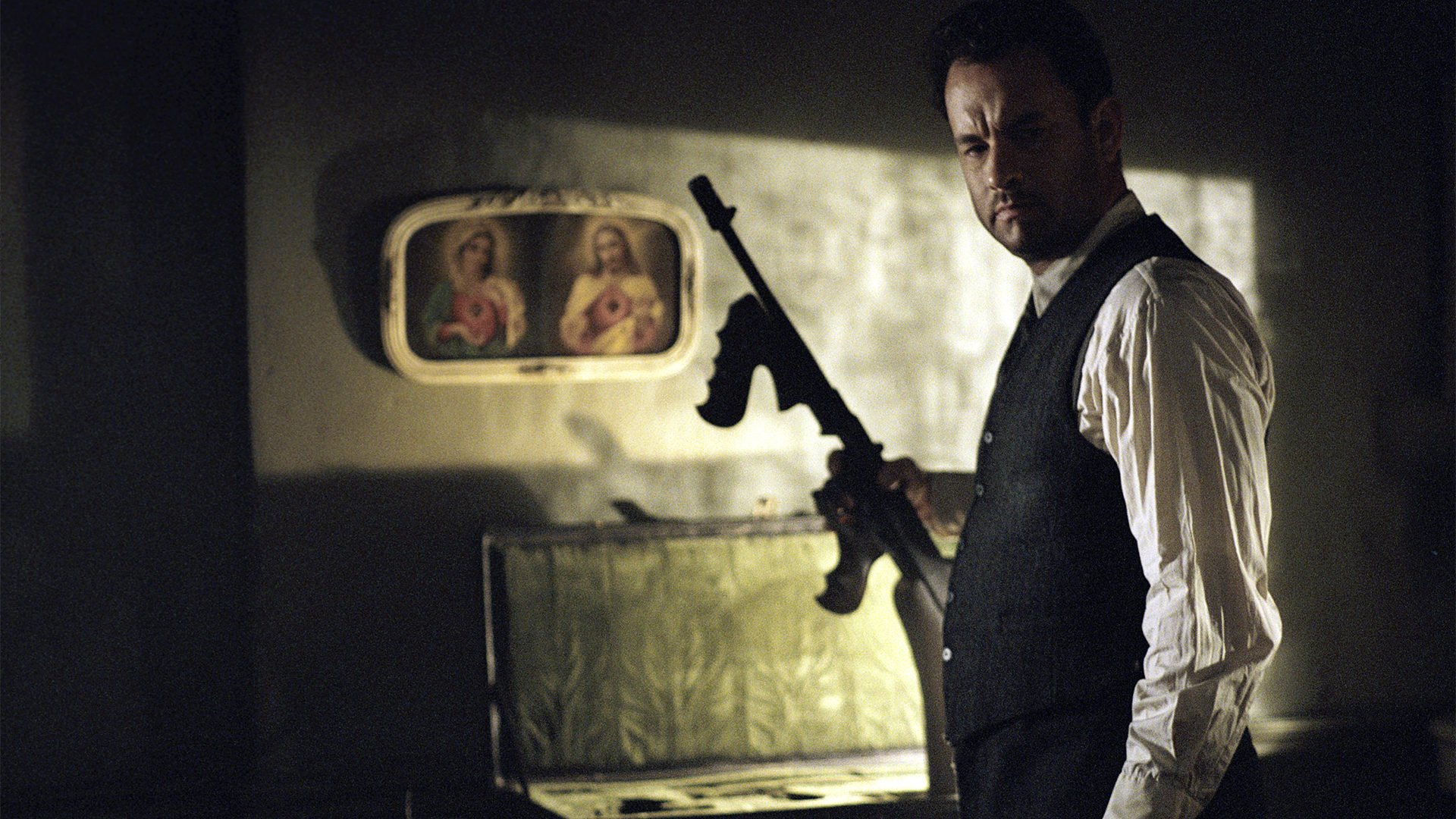When Road to Perdition was released on July 12th, 2002, it caused a mini stir. Audiences weren’t sure if they would be able to buy Tom Hanks in a morally flexible role. The film had the benefit of being director Sam Mendes’ follow-up to the massively successful American Beauty, though, and as such, had creative leeway. Based on Max Allan Collins and Richard Piers Rayner’s graphic novel, which was in turn heavily inspired by the legendary Lone Wolf and Cub manga series, Mendes, screenwriter David Self, and the impressive cast craft a minor masterpiece. Though not without flaws, I’m glad I revisited the film for its twentieth anniversary.
Mike Sullivan (an understated but emotionally resonant Hanks) is a loyal and respected high-level mob enforcer in the Prohibition-era Quad Cities area. A World War I vet and stern family man, he owes everything to fatherly mob boss John Rooney (the legendary Paul Newman in one of his final roles). Curious about his father’s work, Mike’s oldest son Michael (future Superman Tyler Hoechlin) secretly follows him to a job where he witnesses Rooney’s son Connor (cruel and craven Daniel Craig) kill a fellow gangster. After being discovered, Michael swears to keep the bloody secret. However, Connor is resentful of Mike’s relationship with his father and attempts to bend the situation to his advantage, initiating a plot that puts Mike and John in an unavoidable collision course.
The film also features Jenifer Jason Leigh in what amounts to an extended cameo, Ciaran Hinds as a disgruntled mobster, Stanley Tucci as a sympathetic but unhelpful colleague, and Dylan Baker as a foppish crooked bookkeeper. Perhaps my favorite performance, however, is Jude Law’s turn as the repulsive hit man and crime scene photographer hired to end Mike’s relentless quest for vengeance.
Really, all the performances are remarkable, though. Hanks plays Mike as a man who doesn’t enjoy violence but who will effectively employ it if the need arises. Wanting to emphasize the visuals, Mendes and self-limited dialog, allowing their performers to tell the story with body language, and cinematographer Conrad Hall to present wordless but impactful scenery. Hall would win an Oscar for his lush and elegant work. Beautiful and elegiac, Hall’s work is a huge part of the film’s appeal. The sequence where Mike confronts John in an evening downpour is particularly stunning. The production design is also outstanding, with costumes, sets, and especially the vintage vehicles bursting off the screen with impressive texture and detail. Thomas Newman’s score is fantastic, too. At turns melancholy, thrilling, and wistful, it perfectly complements the visuals and somber tone.
I only have a few minor nitpicks with the piece. It briefly sags a bit in the middle when Mike and his son form a deeper bond. Though essential to the narrative, it doesn’t quite work and clashes tonally with the rest of the feature. I’d also say that the voiceover narration at the beginning and end of the film betrays the confidence of the visual storytelling and is a bit too on the nose. It’s particularly aggrieving at the conclusion where Jill Bilcock’s editing is more than sufficient to convey the work’s parting message.
Despite a few missteps, Sam Mendes’ Road to Perdition is effectively lyrical and haunting. You’ve probably seen the basic story before, Gladiator and John Wick both come to mind, but the creative choice to tell the tale through imagery sets it apart. And make no mistake, it’s a gorgeous flick. Tom Hanks doesn’t go full-on bad guy, but he admirably tackles a character that’s grayer than his typical role. Twenty years later, the film seems to be a footnote. I myself dismissed it at the time as being a well-crafted but forgettable effort. However, I now appreciate its themes about fatherhood and its ability to convey the story in a purely cinematic way. It is recommended for fans of tommy guns, period filmmaking, and conflicted gangsters.
Michael Cavender




